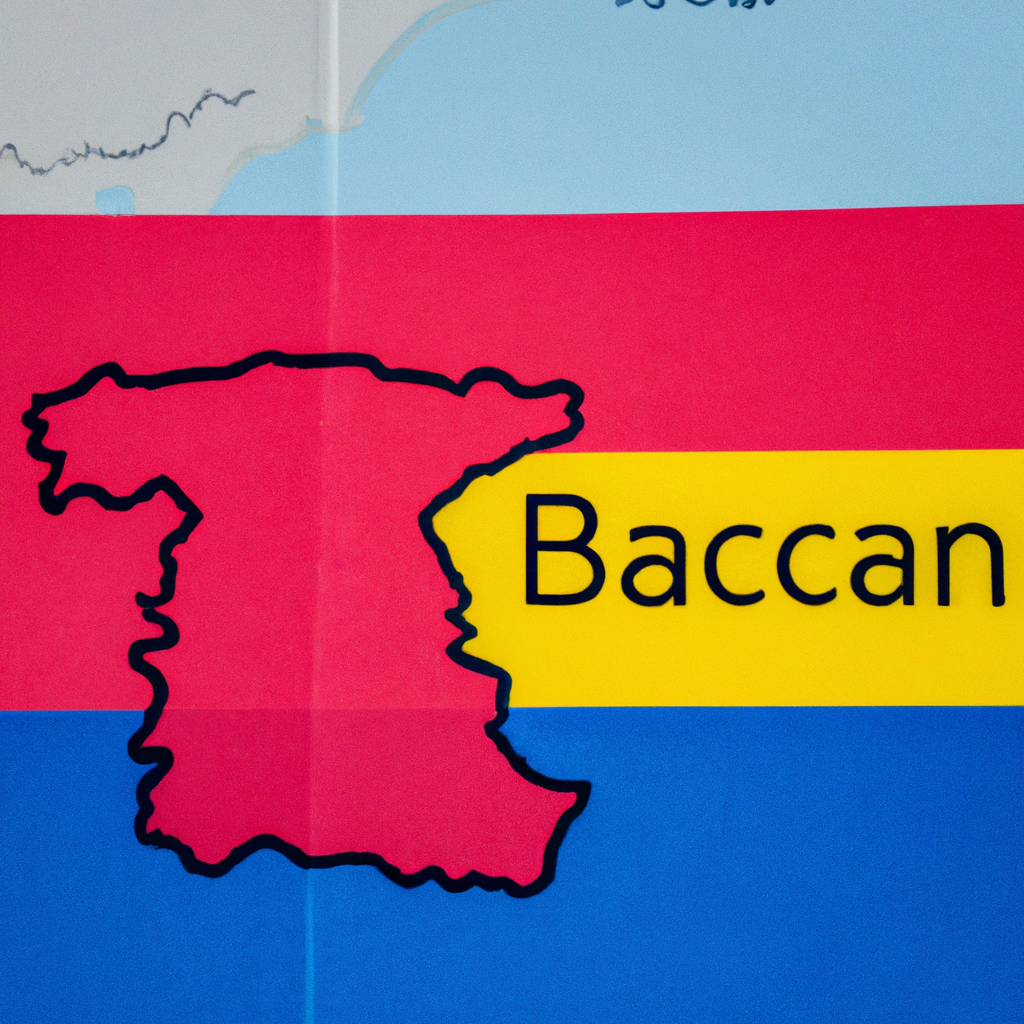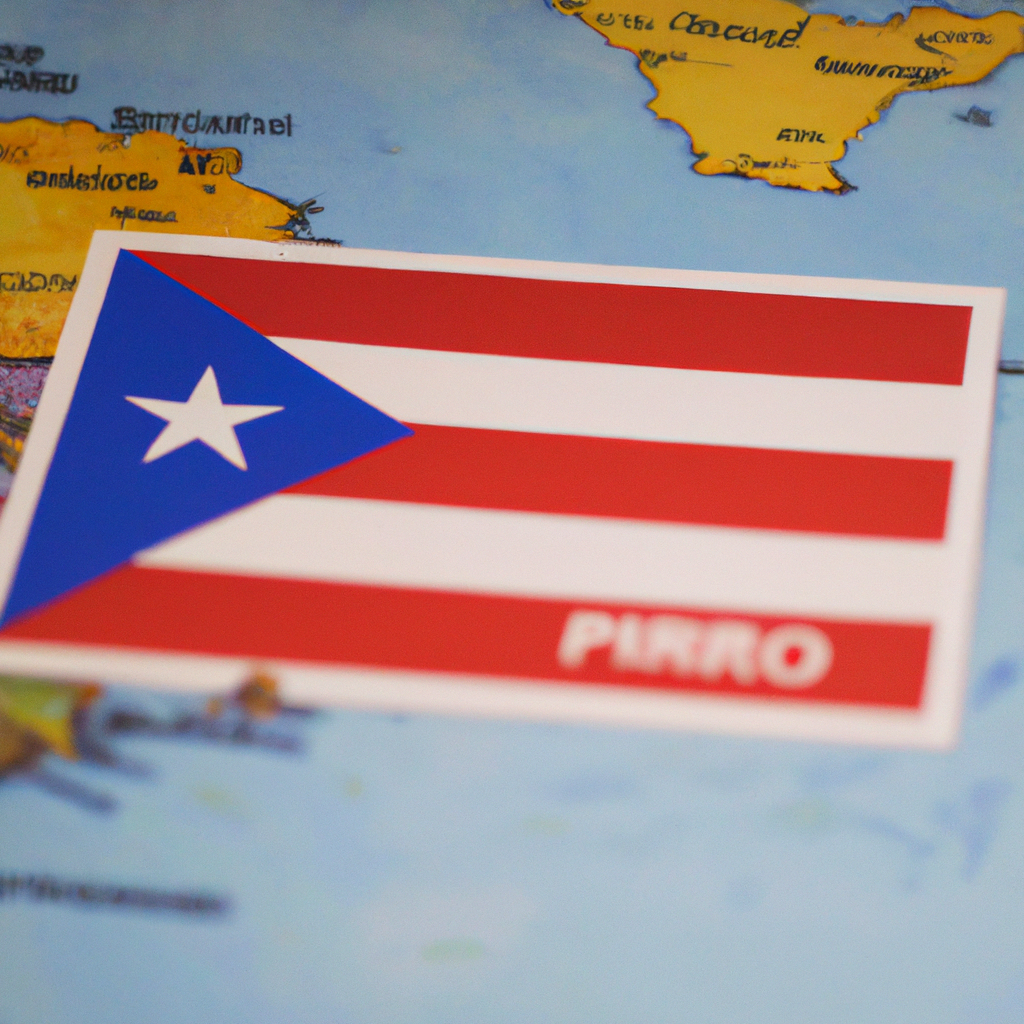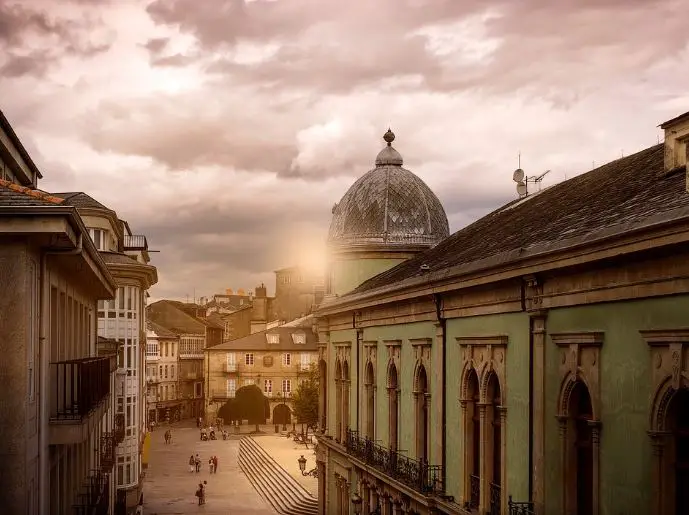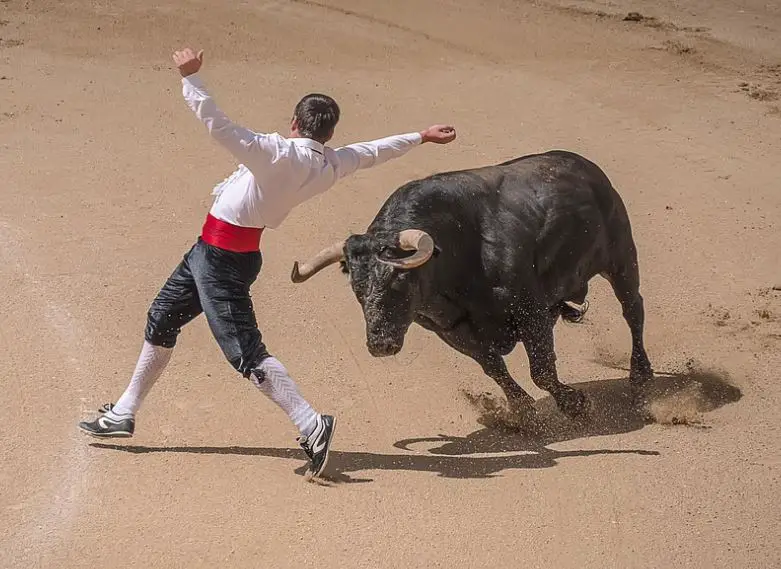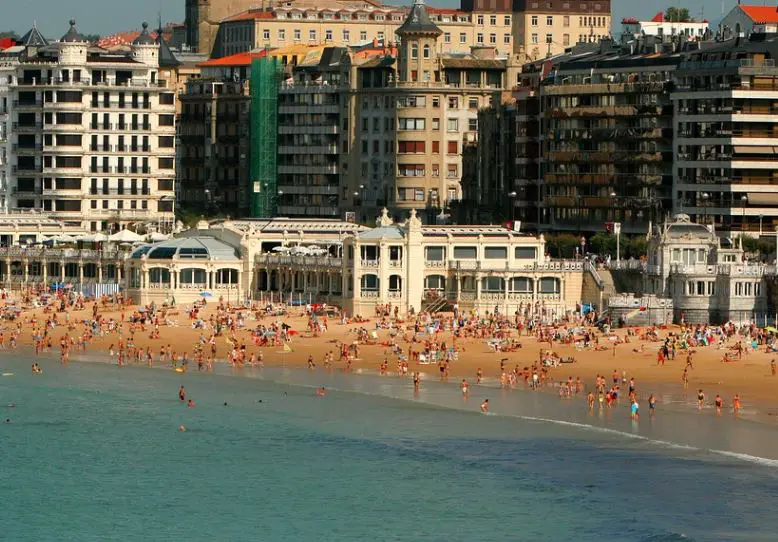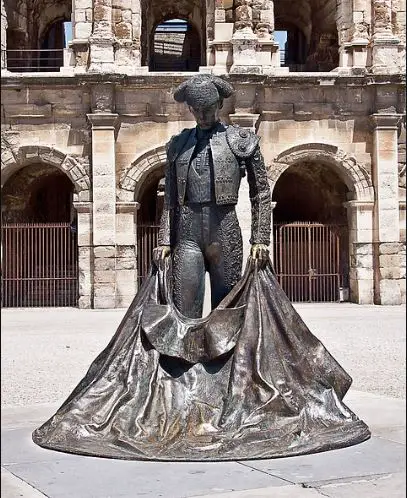Barcelona, Spain: Interesting Facts,History, Things to do,Why to Visit
Post ByAdequate Travel
If you’re looking for an exciting vacation destination, Barcelona, Spain is a great choice. This vibrant city offers interesting history, plenty of cultural activities, and so many amazing things to do. Famous for its Catalan language, tapas dishes, and art-filled museums, Barcelona promises to be one of the most exciting places in the world you’ll ever visit. From the medieval streets of the Gotico quarter, to the Gothic Sagrada Familia and the Las Ramblas promenade, there’s something for everyone. And the fantastic culinary scene, with its mix of traditional dishes and modern creations, should not be forgotten. So come and explore Barcelona, one of the most beautiful and fascinating cities in Spain.
Spain is a country located in southwestern Europe, sharing borders with Portugal, France, Andorra, and Morocco. It is known for its rich history, diverse landscapes, vibrant culture, and Mediterranean climate. Spain has a constitutional monarchy as its form of government, with a parliament called the Cortes Generales. The country's economy is one of the largest in the European Union, with sectors such as tourism, manufacturing, and services contributing significantly. Spain is famous for its popular tourist destinations like Barcelona, Madrid, and Seville, which attract millions of visitors each year. The country is also renowned for its delicious cuisine, flamenco music and dance, and unique festivals such as La Tomatina and Running of the Bulls.Step back in time as you visit the historical sites in spain, where the past comes alive.
Interesting facts
Spain
Spain, officially known as the Kingdom of Spain, is a diverse and fascinating country in Europe. Let's explore some interesting facts about Spain:
Geographical Diversity
Spain is known for its diverse geography, ranging from beautiful beaches to rugged mountains. For instance, it is home to the Pyrenees mountain range, which forms a natural border with France. The Sierra Nevada in southern Spain is where you can find Europe's southernmost ski resort. Moreover, the Canary Islands and the Balearic Islands offer stunning coastlines and unique landscapes.
Cultural Heritage
Spain has a rich cultural heritage, influenced by various civilizations and historical periods. Some of the most famous examples include:
- Roman Influence: The ancient Roman Empire had a significant impact on Spain, leaving behind impressive structures like the Roman Theatre in Mérida and the Aqueduct of Segovia.
- Moorish Influence: During the medieval period, much of Spain was ruled by Islamic Moors, resulting in stunning architectural masterpieces such as the Alhambra in Granada and the Mezquita in Córdoba.
- Gothic and Renaissance Art: Spain witnessed a flourishing of Gothic and Renaissance art, as seen in the Cathedral of Barcelona and the Royal Monastery of San Lorenzo de El Escorial.
Festivals and Events
Spain is renowned for its vibrant festivals and events, which are deeply ingrained in its culture and traditions. Here are a few examples:
- La Tomatina: Held in the town of Buñol, this annual festival involves a massive tomato fight where participants hurl tomatoes at each other.
- Running of the Bulls: The San Fermín festival in Pamplona is famous for its bull runs, where brave individuals run alongside a group of bulls through the city streets.
- Feria de Abril: This spring fair in Seville is a lively celebration of Andalusian culture, featuring flamenco dancing, traditional costumes, and amusement park rides.
Gastronomy
Spanish cuisine is known worldwide for its variety and flavors. Some popular Spanish dishes include:
- Paella: A rice-based dish that originated in the Valencian region and is typically cooked with saffron, vegetables, and proteins such as chicken, rabbit, or seafood.
- Jamón ibérico: This high-quality cured ham comes from black Iberian pigs and is considered a delicacy.
- Gazpacho: A refreshing cold soup made with tomatoes, cucumber, bell pepper, and other ingredients, perfect for hot summer days.
History of Spain
Spain, officially known as the Kingdom of Spain, is a country located in southwestern Europe. With a history that stretches back thousands of years, Spain has been influenced by various civilizations and has played a significant role in shaping European history.
Prehistoric Spain
Spain has been inhabited by humans for thousands of years. Some of the earliest evidence of human presence in Spain dates back to the Paleolithic era, with cave paintings found in the Altamira Caves being an example. The Iberians, a pre-Roman Mediterranean civilization, also left an impact on Spanish history.
Roman Period
During the 3rd century BCE, Spain was conquered by the Romans and became part of the Roman Empire. The Romans established numerous cities, road systems, and introduced their language and culture. One notable example is the city of Tarraco (modern-day Tarragona), which served as the capital of Hispania Tarraconensis.
Visigothic Kingdom
After the fall of the Roman Empire, Visigoths, a Germanic tribe, established a kingdom in Spain. They ruled from the 5th to the 8th century CE. The Visigothic kingdom faced internal conflicts as well as invasions from other groups such as the Vandals and the Muslim Moors.
Muslim Rule and Reconquista
In 711 CE, Muslim armies from North Africa invaded the Iberian Peninsula, leading to the establishment of the Muslim caliphate of Al-Andalus. This period saw the flourishing of Islamic culture and advancements in science, art, and literature. However, Christian kingdoms in the north gradually launched the Reconquista, a centuries-long campaign to retake the Iberian Peninsula from Muslim rule.
Golden Age and the Spanish Empire
The 15th and 16th centuries marked the Golden Age of Spain. During this period, Spain experienced a tremendous expansion overseas, establishing a vast colonial empire in the Americas, parts of Africa, and Asia. The Spanish Empire was one of the world's most powerful and influential nations at that time, with notable figures like explorers Christopher Columbus and Ferdinand Magellan.
Spanish Civil War and Franco's Dictatorship
In the 20th century, Spain went through a turbulent phase. The Spanish Civil War, which took place from 1936 to 1939, led to the establishment of General Francisco Franco's authoritarian regime. Franco remained in power until his death in 1975, after which Spain transitioned into a constitutional monarchy.
Modern Spain
Since the death of Franco, Spain has evolved into a democratic country. It became a member of the European Union in 1986 and has experienced economic growth and social progress. Spain is known for its rich cultural heritage, including flamenco music, bullfighting, and world-renowned artists like Pablo Picasso and Salvador Dalí.
In summary, the history of Spain encompasses prehistoric settlements, Roman rule, the Visigothic kingdom, the Muslim period of Al-Andalus, the Golden Age and the Spanish Empire, the Spanish Civil War, and the modern era of democracy. Each period has left lasting influences on Spain's culture, architecture, and society.Exploring the rich heritage of historical sites in spain is a journey through time and culture.Famous landmarks in Spain
1. Sagrada Familia: The Sagrada Familia is an iconic basilica in Barcelona, designed by the renowned architect Antoni Gaudí. Its unique combination of Gothic and Art Nouveau styles make it one of the most recognized landmarks in Spain.2. Alhambra: Located in Granada, the Alhambra is a breathtaking Moorish palace and fortress complex. Its intricate architecture, stunning gardens, and panoramic views of the city have made it a UNESCO World Heritage site.3. Park Güell: Another masterpiece by Gaudí, Park Güell in Barcelona is a whimsical public park known for its colorful mosaic tiles, winding pathways, and distinctive architectural elements. It offers visitors a surreal and enchanting experience.Famous festivals in Spain
1. La Tomatina: Held in the town of Buñol, La Tomatina is a unique tomato throwing festival that takes place annually in August. Thousands of participants gather to engage in a massive tomato fight, covering the streets in a sea of red.2. Running of the Bulls: The world-famous San Fermín festival in Pamplona involves the running of the bulls through the city's streets. Brave participants run alongside the bulls as they are released, creating a thrilling and adrenaline-fueled event.3. Feria de Abril: Seville hosts this vibrant and colorful fair, celebrated in April. The city comes alive with flamenco dancing, traditional costumes, lively music, and various amusement rides and attractions, attracting locals and tourists alike.Famous dishes in Spanish cuisine
1. Paella: Originating from the Valencia region, paella is a saffron-infused rice dish cooked with various combinations of meats, seafood, and vegetables. It is a popular and traditional dish enjoyed by many throughout Spain and worldwide.2. Tapas: Tapas are small, savory dishes that are typically served as appetizers or snacks. They can include a wide variety of options, such as patatas bravas (fried potatoes with spicy sauce), gambas al ajillo (garlic shrimp), and tortilla española (Spanish omelette).3. Churros: Churros are deep-fried pastries, often enjoyed as a dessert or breakfast treat. They are long, thin pieces of dough that are fried until crispy and served with a cup of thick hot chocolate for dipping.Please note that these examples are purely for illustrative purposes and not an exhaustive list. There are many more famous landmarks, festivals, and dishes in Spain worth exploring.Discover some unique facts about spain that will leave you amaze and intrigue.Culture of Spain
Spain is a country known for its rich and diverse culture, which is a unique blend of various influences including Roman, Moorish, and Christian traditions. The Spanish culture encompasses numerous aspects such as language, art, cuisine, festivals, and customs.
Language
The official language of Spain is Spanish, also known as Castilian. It is spoken throughout the country by the majority of the population. However, Spain also has several other regional languages such as Catalan, Galician, and Basque, which are spoken in specific regions.
Art
Spain has a rich art history, with renowned artists like Pablo Picasso, Salvador Dalí, and Francisco Goya hailing from the country. The architecture in Spain is also remarkable, with various styles ranging from Romanesque and Gothic to Moorish and Renaissance. Examples of famous Spanish architectural landmarks include the Sagrada Familia in Barcelona and the Alhambra in Granada.
Cuisine
Spanish cuisine is diverse and highly regarded globally. Some popular traditional Spanish dishes include paella (a rice dish with various ingredients such as seafood or chicken), tapas (small plates of appetizers consumed with drinks), and gazpacho (a cold tomato-based soup). Spain is also known for its fantastic wines, such as Rioja and Sherry.
Festivals
Spain is famous for its vibrant and lively festivals, most notably the Running of the Bulls (San Fermín) in Pamplona and La Tomatina in Buñol. Semana Santa (Holy Week) is another significant religious festival celebrated throughout the country with processions and elaborate displays. Each region also has its own local festivals, showcasing unique customs, costumes, and music.
Customs
Spanish culture emphasizes the importance of family and social gatherings. The siesta, a short afternoon nap, is a traditional practice observed in some parts of Spain. Spaniards often enjoy leisurely meals with family or friends, and they have a relaxed approach to time. Additionally, flamenco, a traditional Spanish dance form, is a well-known custom that embodies the passion and rhythm of the nation.
Immerse yourself in the local culture by exploring spain's top-rated tourist attractions.Cuisine of Spain
The cuisine of Spain is known for its rich flavors, diverse ingredients, and varied regional specialties. Spaniards take great pride in their food and are known for their love of fresh, quality ingredients and traditional cooking techniques. The cuisine of Spain is heavily influenced by its geographical location, history, and cultural diversity.
1. Tapas
One of the most famous aspects of Spanish cuisine is tapas. Tapas are small, bite-sized dishes that are typically served as snacks or appetizers. They can range from simple dishes like olives, cheese, and ham, to more complex dishes like patatas bravas (fried potatoes with a spicy sauce) and pulpo a la gallega (Galician-style octopus). Tapas are often enjoyed with a glass of wine or beer and are a popular social activity in Spain.
2. Paella
Paella is a traditional rice dish that originated in the region of Valencia. It is usually made with short-grain rice, saffron, and a variety of ingredients such as chicken, rabbit, seafood, and vegetables. The dish is cooked in a large, shallow pan called a paellera, which gives it a distinctive crusty bottom called socarrat. Paella is often enjoyed as a communal dish and is considered a symbol of Spanish cuisine.
3. Jamón Ibérico
Jamón Ibérico, or Iberian ham, is a prized delicacy in Spain. It is made from the meat of Iberian pigs and is known for its intense flavor and melt-in-your-mouth texture. The pigs are fed on acorns, which gives the meat a unique nutty and savory taste. Jamón Ibérico is often served thinly sliced and enjoyed on its own or paired with bread and cheese.
4. Gazpacho
Gazpacho is a refreshing cold soup that is perfect for hot summer days. It is made with ripe tomatoes, cucumbers, bell peppers, garlic, olive oil, and vinegar, blended together until smooth. Gazpacho is typically served chilled and can be garnished with toppings like croutons, chopped vegetables, or even diced jamón serrano. It is a popular dish in Andalusia and is a great example of the fresh, vibrant flavors of Spanish cuisine.
5. Churros
Churros are a beloved dessert in Spain. They are crispy, deep-fried dough pastries that are often served with a cup of thick, hot chocolate for dipping. Churros can be enjoyed at any time of the day, but they are particularly popular for breakfast or as a late-night snack. They are commonly found at street stalls and are a sweet treat that is hard to resist.
Uncover the best spain attractions that will leave you awe-inspired and wanting more.1. Visit the Sagrada Familia in Barcelona
The Sagrada Familia is a must-see attraction in Barcelona, Spain. This stunning basilica was designed by the famous architect Antoni Gaudí and construction began in 1882. The unique architectural style and intricate details make it a masterful work of art. Inside, you can admire the beautiful stained glass windows and intricate stone carvings.
Example: The Sagrada Familia is an iconic symbol of Barcelona and attracts millions of visitors each year. Make sure to book your tickets in advance to avoid long lines and explore the beauty of this architectural masterpiece.
2. Explore the Alhambra in Granada
The Alhambra is a stunning palace and fortress complex located in Granada, Spain. This UNESCO World Heritage Site showcases the rich history and fusion of Islamic and Spanish architecture. You can wander through beautiful gardens, visit the Nasrid Palaces, and enjoy breathtaking views of the surrounding mountains.
Example: Don't miss the opportunity to explore the Alhambra during your visit to Spain. Make sure to purchase your tickets in advance, particularly if you plan to visit during peak tourist seasons.
3. Experience the Running of the Bulls in Pamplona
The annual Running of the Bulls, or San Fermín festival, is a thrilling event held in Pamplona, Spain. People from all over the world gather to witness and participate in the adrenaline-filled spectacle of running alongside the bulls. It is a unique cultural experience that showcases Spanish tradition and attracts thrill-seekers from around the globe.
Example: If you are an adventurous traveler, join the excitement of the Running of the Bulls in Pamplona. Remember to prioritize safety and follow the instructions of the local authorities to fully enjoy this exhilarating event.
4. Relax on the beaches of Costa del Sol
The Costa del Sol, located in the southern region of Spain, is known for its beautiful beaches and vibrant coastal towns. Whether you prefer bustling tourist hotspots or secluded coves, this region offers a variety of options for beach lovers. Enjoy sunbathing, swimming in the crystal-clear waters, and indulging in delicious seafood at the beachfront restaurants.
Example: Take time to unwind and soak up the sun on the beaches of Costa del Sol. Popular beaches include Playa del Carmen in Marbella and La Malagueta in Malaga.
5. Visit the Prado Museum in Madrid
The Prado Museum in Madrid is a renowned art museum that houses an impressive collection of European artwork. From masterpieces by Spanish artists like Velázquez and Goya to works by internationally acclaimed painters such as Rembrandt and Rubens, the museum offers a fascinating journey through the history of art.
Example: Art enthusiasts should not miss the opportunity to explore the Prado Museum. Plan your visit in advance to make the most of your time and appreciate the diverse range of artistic treasures on display.
When planning your trip to spain, be sure to include the best things to do in spain, which encompass a wide range of cultural experiences.Climate of Spain
Spain has a diverse climate due to its varied geographical features and location. The country experiences a Mediterranean climate in most regions, with mild winters and hot summers. However, there are significant differences in climate patterns across different parts of Spain.
Mediterranean Climate
In coastal areas of Spain, particularly along the southeastern coast, a Mediterranean climate prevails. This climate is characterized by mild and rainy winters, and hot and dry summers. Examples of regions with a Mediterranean climate include Barcelona, Valencia, and Malaga.
Continental Climate
In central and northern Spain, a continental climate dominates. This climate is characterized by hot summers, cold winters, and low rainfall throughout the year. Examples of regions with a continental climate include Madrid, Zaragoza, and Burgos.
Atlantic Climate
In the northwestern part of Spain (Galicia and parts of Asturias), an Atlantic climate is present. This climate is mild and humid, with relatively high rainfall throughout the year. Examples of regions with an Atlantic climate include Santiago de Compostela and A Coruña.
Semi-Arid Climate
In some regions of Spain, particularly in the southeastern part and parts of the Canary Islands, a semi-arid climate can be found. This climate is characterized by hot and dry summers, mild winters, and low rainfall. Examples of regions with a semi-arid climate include Almería and Fuerteventura.
Mountain Climate
In the mountainous regions of Spain, such as the Pyrenees and Sierra Nevada, a mountain climate is present. This climate is influenced by altitude and is characterized by lower temperatures and higher precipitation compared to surrounding areas. Examples of regions with a mountain climate include Granada and Huesca.
In conclusion, the climate of Spain varies greatly across different regions. From the Mediterranean climate in coastal areas to the continental climate in central and northern parts, and from the Atlantic climate in the northwest to the semi-arid climate in the southeast, each region has its own climate characteristics. Additionally, the mountainous regions of Spain experience a distinct mountain climate influenced by altitude.Discover the untold stories behind spain unique facts, and historical treasures.Popular Activities in Spain
Spain offers a diverse range of activities that cater to different interests and preferences. Whether you are a history buff, a nature lover, or an adventure seeker, there is something for everyone. Below are some popular activities in Spain:
1. Exploring Historical Sites
Spain is rich in history and boasts numerous historical sites that are a treat for history enthusiasts. Some popular examples include:
- The Alhambra in Granada, an impressive UNESCO World Heritage site renowned for its stunning Islamic architecture.
- The Sagrada Familia in Barcelona, a masterpiece by Antoni Gaudí and an iconic symbol of the city.
- The Royal Palace in Madrid, which offers breathtaking interiors and beautiful gardens.
2. Enjoying Beaches and Water Activities
As a country with miles of beautiful coastline, Spain offers a plethora of stunning beaches and exciting water activities. Some popular examples include:
- The beaches of Costa del Sol in Andalusia, known for their golden sands and vibrant nightlife.
- The Canary Islands, such as Tenerife or Gran Canaria, where visitors can enjoy water sports like surfing, snorkeling, and scuba diving.
- The beaches of Mallorca, a Mediterranean paradise known for its crystal-clear waters and picturesque coves.
3. Hiking and Nature Exploration
Spain is blessed with diverse landscapes, making it a fantastic destination for outdoor enthusiasts. Some popular examples include:
- The Camino de Santiago, a pilgrimage trail that attracts walkers and hikers from all over the world.
- The Picos de Europa National Park in northern Spain, offering breathtaking mountain scenery and hiking trails for all levels.
- The Teide National Park in Tenerife, home to Spain's highest peak and a volcanic landscape that is unparalleled.
4. Indulging in Gastronomic Experiences
Spanish cuisine is renowned worldwide, and one of the best ways to experience it is by indulging in gastronomic adventures. Some popular examples include:
- Tapas tasting in cities like Barcelona or Seville, where you can savor a variety of small dishes, showcasing the richness of Spanish flavors.
- Wine tasting in regions like Rioja or Ribera del Duero, known for their exquisite wines.
- Cooking classes or food tours, allowing you to learn about traditional Spanish recipes and ingredients.
Nightlife in Spain
Spain is known for its vibrant and lively nightlife. Whether you are in one of its major cities or coastal towns, you will find a plethora of options to enjoy the night. Here are some highlights of the Spanish nightlife:
1. Flamenco Shows
Flamenco is a traditional Spanish art form that involves music, dance, and singing. Andalusia, specifically cities like Seville and Granada, are famous for their authentic Flamenco shows. These shows are a fantastic way to immerse yourself in the rich culture and passion of Spain.
2. Bar-Hopping
Spain is renowned for its bar culture, where people socialize over drinks and tapas. Many cities have lively bar districts, such as Barcelona's Gothic Quarter and Madrid's La Latina neighborhood. Walking through these areas, you will find numerous bars, each with its own unique atmosphere and specialties.
3. Clubs and Discos
For those who enjoy dancing and partying until the early hours of the morning, Spain has an abundance of clubs and discos. Ibiza, an island off the eastern coast of Spain, is particularly famous for its vibrant nightlife scene and hosting some of the best DJs in the world. Other cities like Barcelona and Valencia also offer a wide range of clubs with different music genres and atmospheres.
4. Terrazas and Rooftop Bars
Spain's pleasant weather lends itself to enjoying outdoor spaces, even at night. Terrazas (terraces) and rooftop bars are popular spots to relax with a drink, socialize, and admire the city skyline. Cities like Madrid, Barcelona, and Valencia have numerous terrazas and rooftop bars offering stunning views and a sophisticated ambiance.
5. Festivals and Events
Spain is well-known for its festive culture and hosts numerous events and festivals throughout the year. From the world-famous La Tomatina in Buñol to the Carnival in Tenerife, there is always something happening. These events often involve music, dancing, and performances, providing a unique and lively nightlife experience.
In conclusion, Spain offers a diverse and exciting nightlife scene with something to suit every taste. Whether you prefer traditional flamenco shows, pub-crawling, clubbing, outdoor terrazas, or attending festivals, there is no shortage of options to enjoy the vibrant Spanish nightlife.Step back in time as you visit the historical sites in spain, where the past comes alive.Reasons to Visit Spain
Spain is a country known for its rich history, stunning landscapes, vibrant culture, delicious cuisine, and warm and welcoming locals. Here are some compelling reasons why you should consider visiting Spain:
1. Historical Sites and Architecture
Spain is home to numerous historical sites and awe-inspiring architecture that attract millions of visitors each year. The country boasts iconic landmarks such as the Sagrada Familia in Barcelona, the Alhambra in Granada, the Mezquita in Cordoba, and the Royal Palace in Madrid. These sites offer a glimpse into Spain's vibrant past and showcase exquisite architectural styles from different eras.
2. Beautiful Beaches
With its long coastline, Spain is blessed with breathtaking beaches that cater to all tastes. Whether you're looking for white sandy beaches, crystal-clear waters for snorkeling, or vibrant party scenes, Spain has it all. The Mediterranean coast offers stunning beaches like Costa del Sol and Costa Brava, while the Atlantic coast boasts places like San Sebastian and Tarifa, known for their great surf.
3. Vibrant Culture and Festivals
The Spanish culture is vibrant, colorful, and deeply ingrained in daily life. Spain is famous for its lively festivals, such as La Tomatina in Buñol, the Running of the Bulls in Pamplona, and the Feria de Abril in Seville. These celebrations give visitors a chance to immerse themselves in Spanish traditions, enjoy local music and dance, and savor traditional cuisine.
4. Delicious Cuisine
Spanish cuisine is renowned worldwide for its mouthwatering flavors and ingredients. From tapas – small dishes perfect for sharing – to paella, gazpacho, and churros, there is an endless array of delicious food to try. Each region in Spain has its own specialties, so you can embark on a gastronomic adventure, sampling local delicacies wherever you go.
5. Natural Beauty and Outdoor Activities
Spain's diverse landscapes offer a wealth of natural beauty, making it an ideal destination for outdoor enthusiasts. From the picturesque Pyrenees Mountains to the stunning beaches of the Canary Islands, you can find a range of activities to enjoy. Hiking, cycling, skiing, and watersports are just some of the many options available to explore Spain's breathtaking natural surroundings.
6. Cultural Heritage and Art
Spain has a rich cultural heritage that has given birth to world-renowned artists such as Pablo Picasso, Salvador Dalí, and Diego Velázquez. Visitors can explore numerous art museums, galleries, and exhibitions showcasing masterpieces from these influential artists. From the Prado Museum in Madrid to the Picasso Museum in Barcelona, there are countless opportunities to appreciate Spain's artistic contributions.
In summary, Spain is a country that offers a diverse range of attractions and experiences for travelers. Whether you are interested in history, nature, food, festivals, or art, Spain has something to offer. Its rich cultural heritage, stunning beaches, delicious cuisine, and warm and welcoming locals make it a destination worth exploring.Whether you're a history buff or an adventure seeker, spain has an attraction for you. So, don't miss the chance to visit popular places in spainNumber of Days Required to Visit Spain
In order to fully explore and experience the beauty and diversity of Spain, it is recommended to spend at least 10-14 days in the country. The number of days required can vary based on individual preferences, budget, and the specific regions and attractions one wishes to visit.
Factors to Consider
1. Time availability: Assess how many vacation days or weeks you can allocate for your trip to Spain. This will determine the maximum number of days you can spend exploring the country.
2. Destinations: Decide on the specific cities, regions, and attractions you wish to visit in Spain. This will help you estimate the amount of time you need in each location.
3. Type of trip: Consider whether you prefer a relaxed, leisurely trip with plenty of time to soak in the culture and atmosphere, or a more fast-paced itinerary with multiple destinations.
4. Interests: Think about your interests, such as history, art, food and wine, beaches, or outdoor activities. This will influence the duration of your trip as some activities require more time.
Sample Itineraries
1. One-week trip: If you have limited time, you can still have a fulfilling trip by focusing on one or two regions. For example, you could spend a few days in Barcelona, exploring its iconic landmarks like Sagrada Familia, Park Güell, and Gothic Quarter. Then, head south to the vibrant city of Seville, known for its stunning architecture, flamenco culture, and delicious tapas.
2. 10-day trip: With a slightly longer duration, you can add more destinations to your itinerary. Start in Madrid, the capital of Spain, and spend a few days exploring its renowned museums and lively neighborhoods. Then, make your way to Granada to marvel at the breathtaking Alhambra and immerse yourself in the unique Moorish influence. Continue to the coastal city of Valencia for its futuristic architecture, traditional cuisine, and beautiful beaches. Finally, end your trip in Barcelona.
3. Two-week trip: If you have the luxury of time, you can experience a comprehensive tour of Spain. In addition to the above-mentioned cities, consider visiting the historic city of Toledo, the picturesque coastal town of San Sebastian, the artistic hub of Bilbao with its famous Guggenheim Museum, the sunny beach destination of Malaga, and the charming Andalusian towns of Ronda and Cordoba.
Ultimately, the number of days required to visit Spain depends on various factors. It is important to plan your trip according to your own preferences and priorities, ensuring that you have enough time to truly immerse yourself in the culture, history, and beauty of the country.
Discover unique facts about spain, a destination filled with rich history and natural beauty.Significance of Spain
Spain holds great significance in various aspects, including history, culture, tourism, economy, and sports. Here is a detailed explanation of its significance:
1. Historical Significance:
Spain's rich history dates back thousands of years, with influences from the Romans, Moors, and Christian kingdoms. It played a vital role in the colonization of the Americas, resulting in the spread of the Spanish language and culture worldwide. The heritage sites, such as the Alhambra, Sagrada Familia, and the historic cities of Toledo and Seville, attract millions of tourists.
2. Cultural Significance:
Spain is renowned for its vibrant culture, flamenco dance, bullfighting, and gastronomy. It has produced world-famous artists like Pablo Picasso, Salvador Dali, and Antoni Gaudi. Spanish festivals, such as La Tomatina and Running of the Bulls, are celebrated worldwide for their uniqueness.
3. Tourism Significance:
Spain is one of the most popular tourist destinations in the world, attracting around 82 million visitors annually. Its diverse landscapes, beautiful beaches, historic landmarks, and vibrant cities like Barcelona and Madrid make it an ideal place for travelers. Tourism contributes significantly to Spain's economy.
4. Economic Significance:
Spain is the 14th largest economy globally and a member of the European Union. It has a diversified economy, with sectors like tourism, agriculture, manufacturing, and services contributing to its growth. Spanish companies, such as Zara, Banco Santander, and Telefonica, have a global presence.
5. Sports Significance:
Spain has made its mark in various sports, especially football (soccer). The national football team, known as La Roja, won the FIFA World Cup in 2010 and the UEFA European Championship in 2008 and 2012. Spanish football clubs like Barcelona and Real Madrid are considered among the best in the world.
In summary, Spain's significance lies in its rich history, diverse culture, popular tourism, strong economy, and sports achievements. Its influence can be witnessed globally through its language, art, festivals, and brands.From hidden gems to iconic landmarks, spain has something for every traveler's taste.